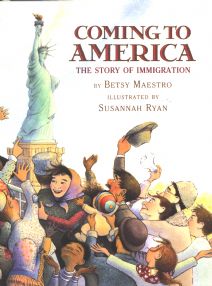As COVID-19 deaths spiked in 2020, Suzanne Firstenberg’s public art installation "In America: How could this happen…"
History Explorer Results (105)
Related Books (30)

Grade Range:
9-12
Resource Type(s):
Primary Sources, Interactives & Media, Lessons & Activities
Date Posted:
11/10/2009
This teacher's resource challenges students to think about the gold nugget that began the California gold rush as a valuable resource for understanding westward expansion and the idea of Manifest Destiny. It includes a preliminary activity intended to introduce students to doing hi

Grade Range:
9-12
Resource Type(s):
Primary Sources, Interactives & Media, Lessons & Activities
Date Posted:
11/8/2009
This object-based learning activity revolves around the short-handled hoe, the bracero program, Cesar Chavez and the organizing of Latino farm workers in the American southwest after World War II. Students will learn about the role of Mexican guest workers in American agricultural histo

Grade Range:
9-12
Resource Type(s):
Primary Sources, Interactives & Media, Lessons & Activities
Date Posted:
11/7/2009
This object-based learning activity revolves around the gold nugget that began the California gold rush. In this resource, students will learn how examining the gold nugget can help them understand the story of the gold rush and its importance to the story of westward expansion. After explor

Grade Range:
9-12
Resource Type(s):
Primary Sources, Interactives & Media, Lessons & Activities
Date Posted:
11/2/2009
This resource includes an introductory essay entitled Looking at Artifacts, Thinking about History, 6 sections that each focus on an object from the collections of the Museum, an archive of curator commentary, and an online tool with which students can create virtual exhibits. Also inclu

Grade Range:
K-12
Resource Type(s):
Artifacts, Primary Sources
Date Posted:
9/29/2009
The Teatro Campesino was founded by Luis Valdez in 1965 to energize the political message of the United Farmer Workers of America using song, music, and drama. Modern, bicultural, and socially aware, the street theater of the Teatro Campesino is a touchstone of Chicano art. At first taking their

Grade Range:
K-12
Resource Type(s):
Artifacts, Primary Sources
Date Posted:
9/25/2009
The evolving civil rights movement of the 1950s, 1960s, and 1970s revolutionized the consciousness of young people across the United States. As in African American communities, a new sense of mobilization spread among Mexican Americans. Many adopted a more political identity—chicano an

Grade Range:
K-12
Resource Type(s):
Artifacts, Primary Sources
Date Posted:
9/25/2009
Pancho Villa is one of the most recognizable leaders of the Mexico Revolution. This civil war, which lasted from 1910-1921, was fought to curb U.S. corporate interests and to redistribute agricultural lands, especially for indigenous communities. It was a social revolution that reasserted popular

Grade Range:
K-12
Resource Type(s):
Artifacts, Primary Sources
Date Posted:
9/25/2009
Following the Treaty of Guadalupe Hidalgo and the annexation of Texas, the land claims of many Mexican families were not respected, either by the new English-speaking settlers or by the U.S. government. Dispossession from family- and community-owned lands dealt a severe economic blow to the livel

Grade Range:
K-12
Resource Type(s):
Artifacts, Primary Sources
Date Posted:
9/20/2009
Mariachis, groups comprised of vocalists, trumpeters, violinists, and various bass and guitar players, are today considered Mexico's traditional musical ensemble. Originally from the state of Jalisco, mariachi music transformed itself from a regional to a national music between the 1930s and 1950

Grade Range:
K-12
Resource Type(s):
Artifacts
Date Posted:
9/20/2009
The French-born artist Jean Charlot spent his early career during the 1920s in Mexico City. His 1948 lithograph depicts a scene from the domestic life of a Mexican indigenous woman, a favorite theme of the artist. Household work-without the aid of most, if any, electrical appliances-was a full-ti



















